Transferre - The Alchemical Metaphor
I have already worked with salt and alchemy in the context of the traveling exhibition Osservatorio 3 –Progetto Stirone- wanted by Professor Franco Marrocco and Professor Daniela Moro. We students were asked to create a work of art that took into account the history of the Stirone river area and the two medieval villages where we would exhibit, Vigoleno and Scipione. Furthermore, the work created by each of us had to talk about alchemy.
In Scipione, in the Middle Ages, salt was produced thanks to the salt water extracted from nearby wells; in Vigoleno, vin santo was and still is produced. Between these two elements, I chose salt, I documented how it was produced in Scipione and I looked for a connection with alchemy and art.
Here is my work installed in Scipione.
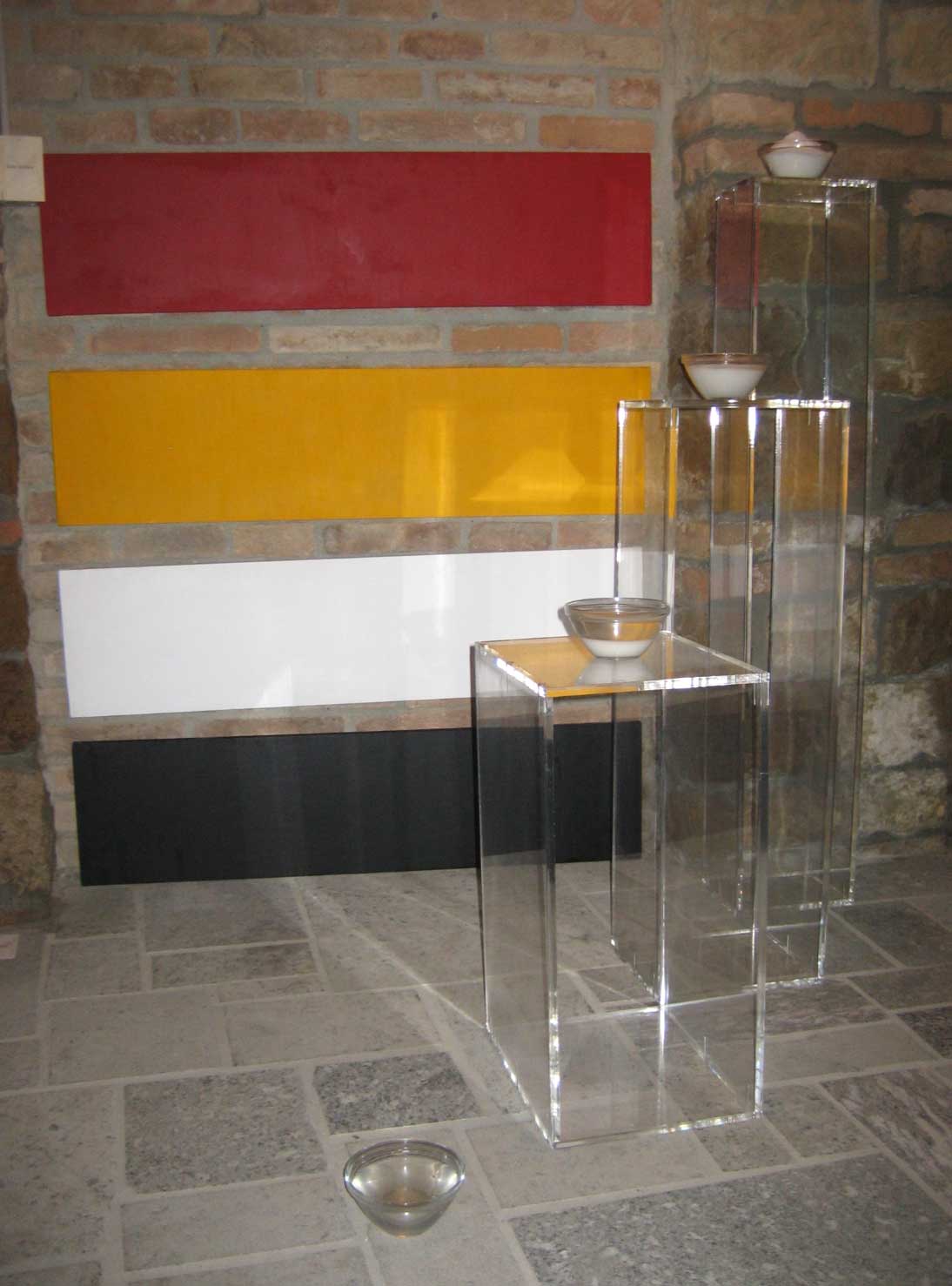
Salt water was taken from Scipione’s wells and boiled to evaporate it and obtain salt as a residue.
In the cups that I placed on the floor and on the plexiglass risers we find salt water, brine in two with different concentrations, and finally salt.
The four background canvases symbolize the four alchemical phases (Nigredo, Albedo, Citrinitas, Rubedo) through which the raw matter is purified and elevated until it reaches gold.
Through the plexiglass risers I have connected the salt water that transforms into salt and the four alchemical phases. The raw matter-salt water passes through the four phases and transforms into gold-salt.
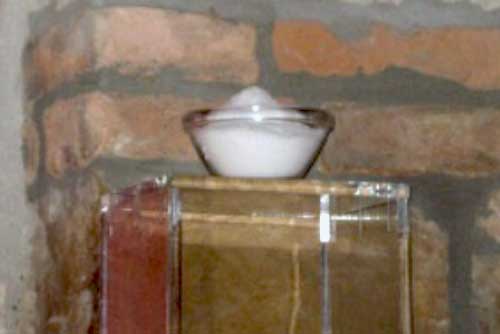 | 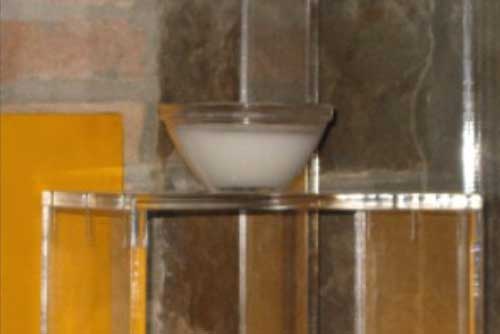 | 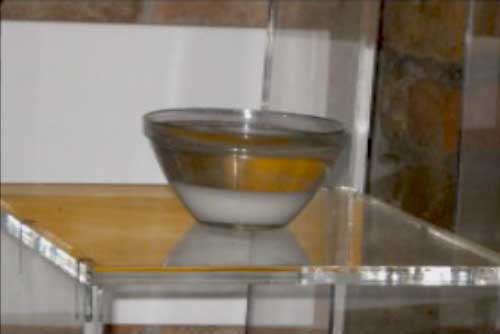 | 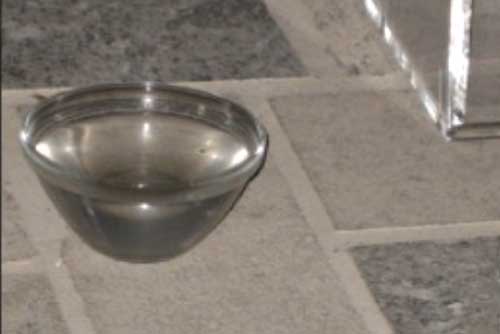 |
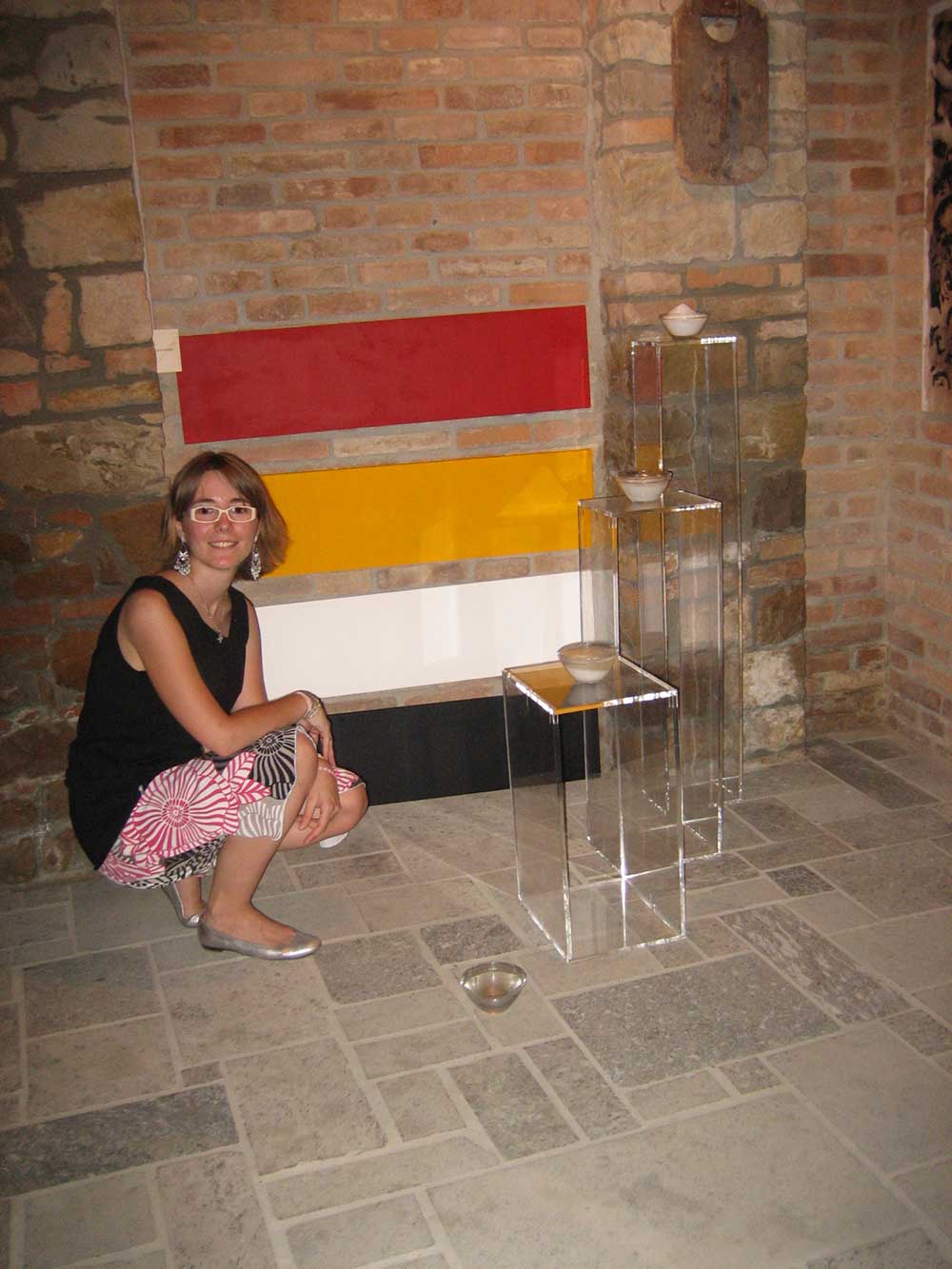
Below is my work installed in Vigoleno, above the stairs of the side entrance of the church of San Giorgio, a perfect place for a work that speaks of alchemy.
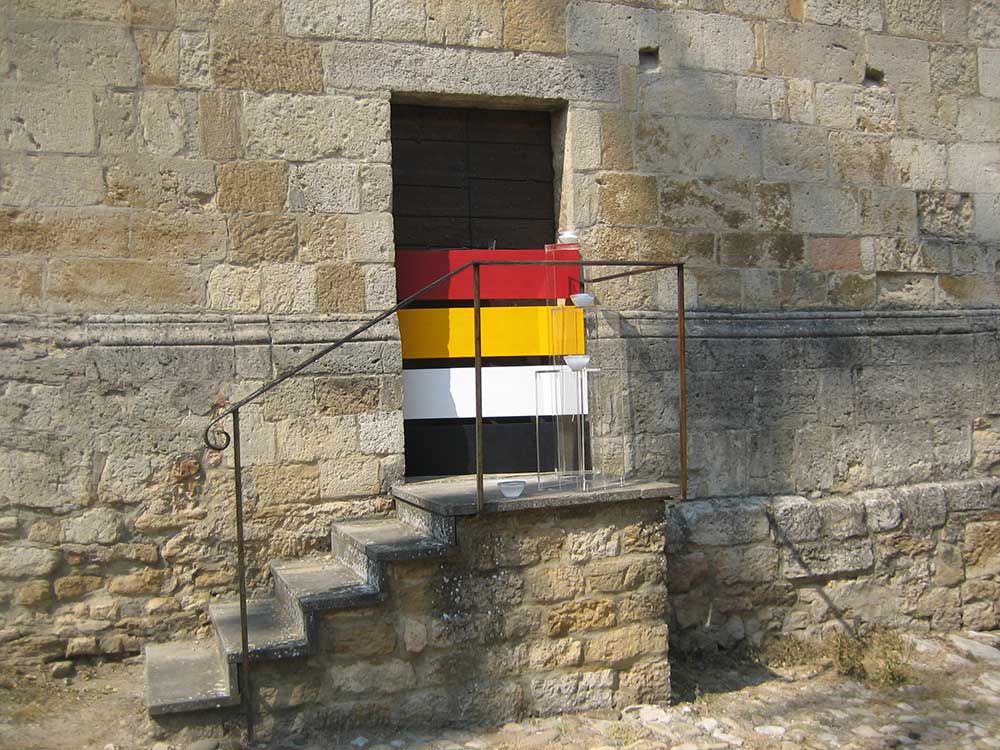 | 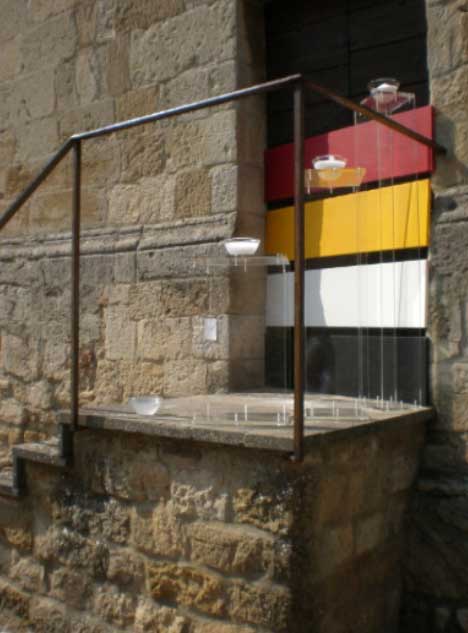 | 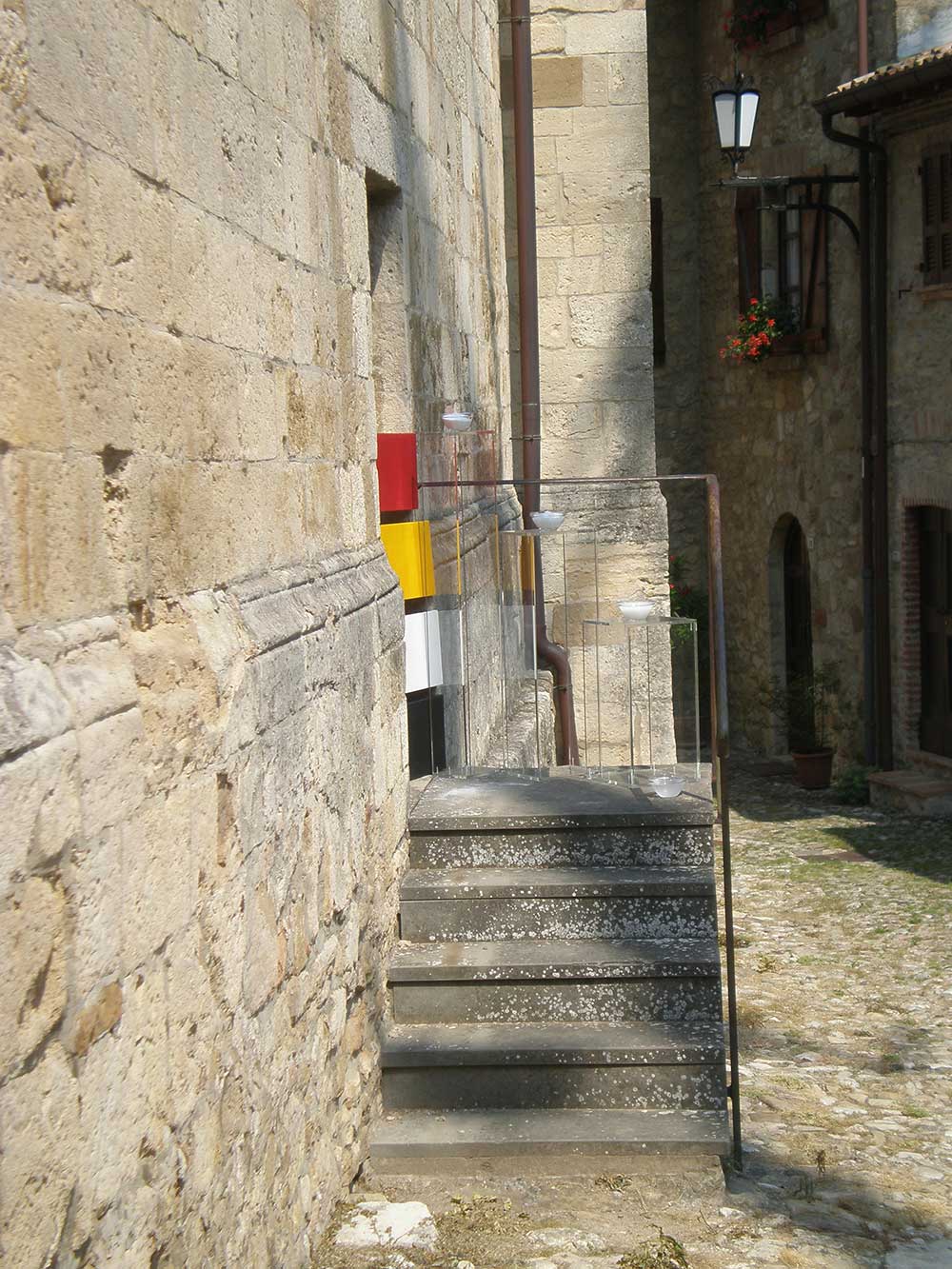 |
Following this experience, I continued my research in the alchemical field and decided to talk about it in my thesis. I therefore created for my thesis project a work in which salt is interpreted as an alchemical symbol.
By alchemy we usually mean a practice that aimed to transform lead into gold, but alchemical work is actually a metaphor for a transmutation much more precious than that of lead into gold, that is, the spiritual elevation of the initiate to this “science”, the alchemist therefore, by performing material gestures is actually looking for the inner gold. The Philosopher’s Stone is the means used to transmute base matter into gold, and is composed, like all matter in the world, of salt, sulfur and mercury. These three fundamental principles, which are a metaphor for body, spirit and soul, are perfectly balanced in the substance of the Philosopher’s Stone. Sulfur, of an igneous nature, and mercury, watery and humid, would never be able to unite if salt, a neutral element, did not intervene to balance them.
My work aims to expose the work of the alchemist in search of the Philosopher’s Stone that will lead him to gold. The table is a symbol of work, in this case of alchemical operation, for its creation I was inspired by Lucas Martin’s alchemical table.
My table is transparent as are the stills that contain the substances in transformation. It, like a large alembic, contains the three elements that constitute matter, sulfur, mercury and salt, in their natural state of minerals (mercury is extracted from cinnabar, a mineral that appears in my work in place of pure mercury). They are incorporated into the top to make it clear that the table itself is made up of these three elements.
The table top is transparent like a still, but also like the matter that crystallizes before becoming

